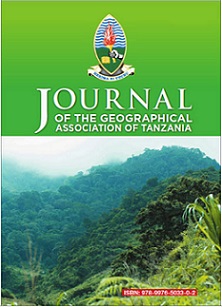The Innovative Adaptation Structures of Agropastoral Communities to the Impact of Climate Change and Variability in Semi-Arid of Tanzania: A Case of Kiteto and Kilindi Districts
Abstract
The study made an investigation on agro-pastoralists ' resilience through innovative
adaptation structures to the impacts of climate change and variability in semi-arid
areas of Kiteto and Kilindi districts. Data were collected using household survey which
sampled 384 households, Focus Group Discussion, In-depth interviews and field visits
were also used to collect more detailed data. The results indicated that the majority of
the respondents indicated the decline in grazing lands/pastures and water resources
leading to the decrease in the number of livestock and crop productivity by about
91.1%) being the major effect of climate change and variability in the study areas. All
these have resulted to food insecurity for about six years consecutively. Therefore, to
increase resilience, agro-pastoralists have developed innovative adaptation strategies
which varied from one village to another, however, most of them were similar in
abating food insecurity and climate change vulnerability. Overall, the main innovated
adaptation strategies in order of importance were seasonal mobility with their
livestock, construction of traditional water points locally known as Njoro, the use of
traditional by-laws for pastures conservation/rotational use, traditional Maasai
constructed water reservoirs (Mboutu), reducing stock number by selling and women
transporting water by donkeys from traditional wells/Njoro and all of which have
increased their livelihoods in dry lands.
keywords: Agro-pastoralism, climate change, climate variability,
vulnerability, adaptation, Njoro, Mboutu


